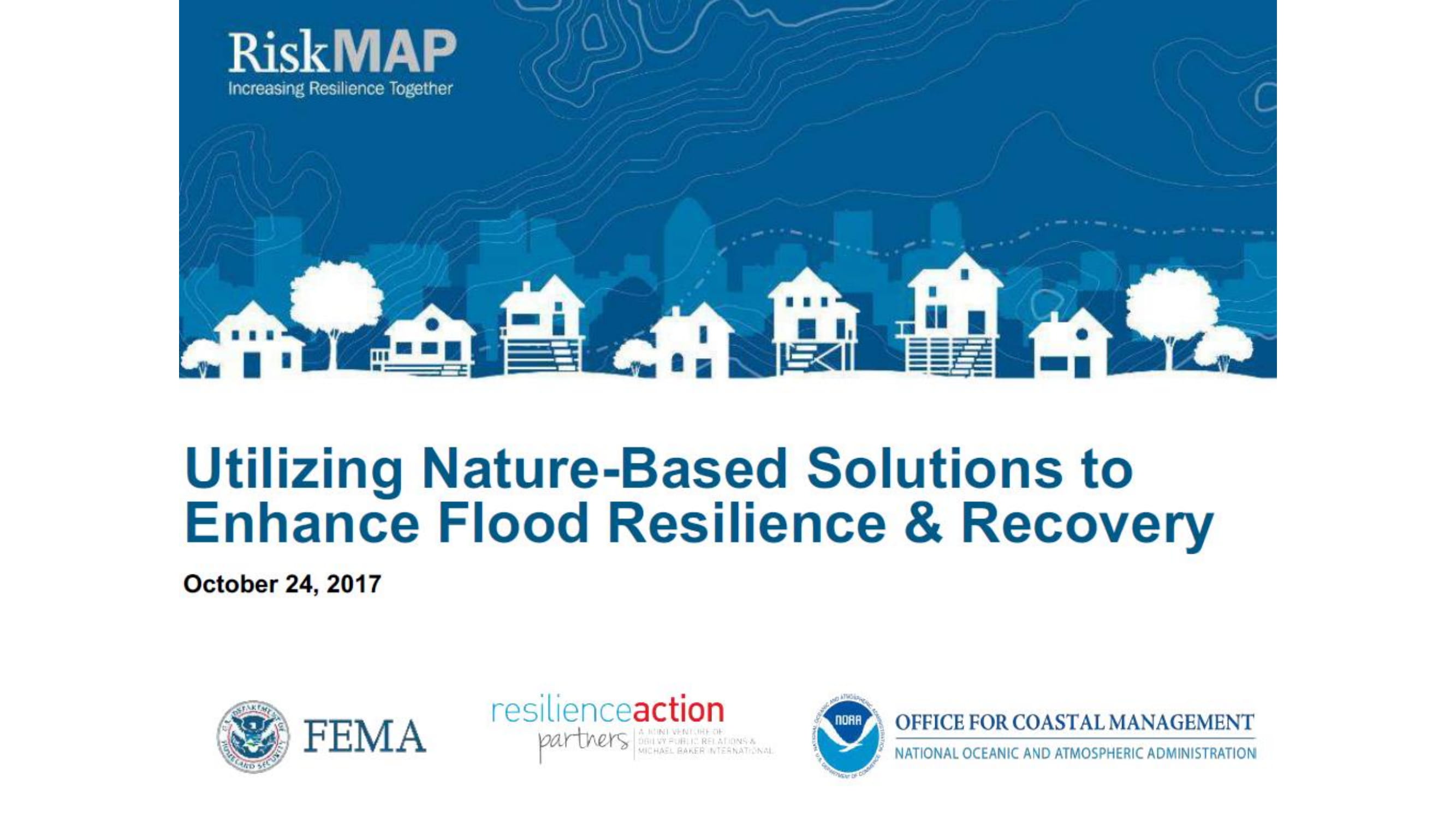Southeast U.S.
Sea level rise, warming waters and changes in storm patterns area are affecting coastal areas. From the peaceful beach city of St. Mary’s, GA, to the metropolitan mecca of Miami, FL, these coastal communities have one thing in common: they are all seeing effects from the changing ocean. Southeast coastal communities from North Carolina down to Florida have partnered to build understanding of the roles that natural ecosystems have in regards to coastal resilience and planning. Project partners in these four states are conducting in-the-water shoreline erosion control projects to research protection of coastal marshes, barrier islands, coral reefs, floodplains and other habitats critical to natural resilience.
Regional Projects & Solutions
Overview
Between 1980 and 2006, coastal southeastern counties showed the largest rate of population increase of any coastal region in the contiguous United States. As nearshore waters grow warmer, communities may shift; this is specifically true at the population-dense zones around Cape Hatteras, North Carolina and Cape Canaveral, Florida. Pressures for tourism and development often lead to destruction of coastal habitats and bring tidal flow alterations, and amplified inputs of nutrients and toxins, which impact estuarine and nearshore systems.

TNC is working to mitigate beach erosion, an environmental problem caused by human impact. Photo Credit: (c) Sarah Hartman
Barrier islands, sand shoals, and riverine deltas are geologically unstable and therefore easily impacted by human activities that diminish sand sources. Channel dredging, as is happening in the Port of Savannah, Georgia, impacts shorelines as sediments accumulate in the deepened channels rather than on the adjacent shores. Also, nearshore sand mining, which occurs in several dozen locations along the east coast, can starve beaches of their natural sand supply in an attempt to nourish other beaches. This can cause loss of some beaches, or they may become more temporary as erosion rates increase.
Although sea level rise and storm frequency are typically the primary climate change impacts associated with coastal systems, changes in water temperatures and pH will accompany them. Lower ocean pH due to elevated global CO2 concentrations, also known as ocean acidification, will inhibit processes oysters rely on for shell development. Healthy oyster reefs decrease the number of harmful algae blooms and the associated fish kills and beach closures. A majority of the coastal wetlands lost from 2004 to 2009 were attributed to effects from coastal storms, land subsidence, sea level rise, or other ocean processes.
These issues can prove disastrous for local economies and are some of the reasons coastal resilience is at the forefront of our minds and we are investing so much into finding the best all-around solutions for these issues.
Land Restoration, Community & Living Shorelines
The Southeast network is a regional solution to coordination and knowledge sharing across the four Southeast US states: North Carolina, South Carolina, Georgia and Florida (including the Florida Keys). Site-based projects throughout the area are demonstrating the feasibility and effectiveness of using preserved and restored natural shorelines as part of an overall coastal adaptation package – conserving wetlands, beaches, reefs and estuaries both today and into the future in the face of change.
Projects currently include a range of coastal resilience strategies and natural solutions including living shorelines, community planning, and land protection.

Employees from Boeing in Charleston, SC volunteered to help The Nature Conservancy in South Carolina build a new Oyster Castle reef on the Dupre property, which is found along the Intracoastal Waterway in McClellanville, SC. ©2012 Clay Bolt
Resources
For the latest reports, publications and other resources on coastal resilience in the Southeast Atlantic US, visit the Coastal Resilience Resource Library on the Conservation Gateway.
Related Stories and News
Building Resilience – There’s no “i” in Team
The Town of Swansboro sees nature as a key to their resilience. This point was driven home last fall when Hurricane Florence struck the town – flooding homes and businesses . A Conservation Priority Area will cluster future development away from coastal areas, wetlands, and floodplains to make the town more resilient to future storms.
Partnership Results in Deep Dive for Oyster Research
In partnership with the Coastal Studies Institute, TNC built a series of oyster reefs along a highly eroding shoreline at a TNC conservation easement located just north of the Institute and this site will function as a living laboratory for researchers and students. TNC’s Restoration Explorer was used to identify the site and helps others identify where they can use natural techniques like this to stabilize their shores.
Low Impact Development in Coastal South Carolina: A Planning and Design Guide
The purpose of this manual is to remove barriers to Low Impact Development implementation by providing engineering tools, planning guidance, and case study examples that are relevant to the South Carolina coastal zone.
Georgetown County Focus Group Meeting Notes
Goal: Utilize local knowledge and expertise to identify flood prone areas around the rivers in Georgetown County.
Outcome: Prioritized list of focus area and nature based projects to reduce flood potential.
Using Natural Infrastructure To Protect Coastal Roads and Bridges
The Federal Highway Administration (FHWA) is producing research and technical assistance to enable transportation agencies to use natural and nature-based features to improve the resilience of transportation systems.
Nature‐Based Solutions for Coastal Highway Resilience
This white paper briefly describes the current state of practice regarding the use of nature‐based coastal solutions in general and with specific emphasis on their use along coastal highways. It provides an overview of available tools for design, implementation challenges, and knowledge gaps.
Exploring nature-based mitigation, including post-disaster solutions and their impact.
Introduction to nature-based solutions
• Case studies
• Nature-based solutions in a post-disaster environment
• Barriers to implementation
• Potential and innovative funding sources
Utilizing Nature-Based Solutions to Enhance Flood Resilience & Recovery
• Introduction to natural and nature-based solutions
• Approaches, case studies, and resources
• Considering natural and nature-based solutions for redevelopment and recovery
• How these approaches fit into FEMA programs











